 Back to selection
Back to selection
Violet: How They Achieved This Stunning 4:3 Film’s Most Stunning Shots
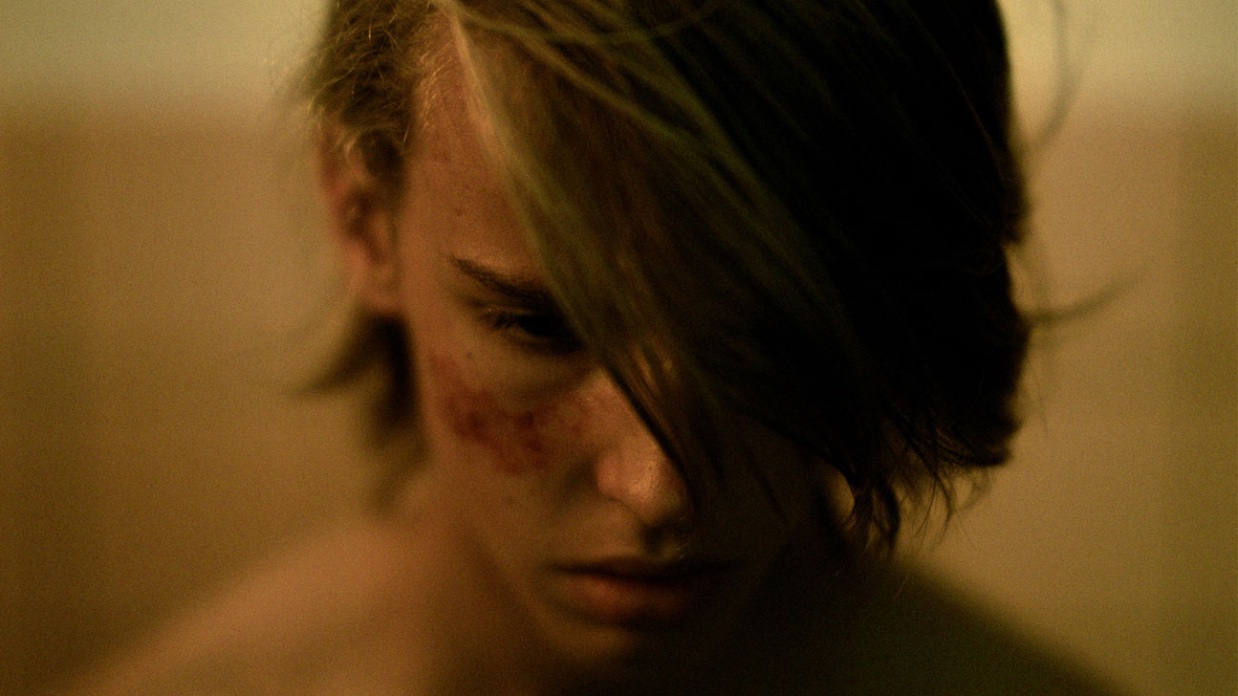 Violet
Violet Floating in an ocean of equals parts uncertainty and obscurity after winning the Grand Prix of the Generation 14plus International Jury in 2014, Bas Devos’s feature debut Violet didn’t reach American shores, beyond a handful of festivals, until new distributor Altered Innocence took a chance and set a theatrical date and announced a subsequent physical release. Saved from being forgotten, the film is one of the most striking and pure cinematic works to arrive stateside this year, and exemplifies the importance of betting on unorthodox voices that aim to challenge the medium’s formal conventions.
Shot in the 4:3 aspect ratio to enhance the themes of intimacy and isolation present in the content, Violet begins with the brutal stabbing of a teenage boy right in front of his powerless best friend and then follows the survivor as he grapples with guilt, regret and loss. Thriving on non-verbal communication, visual motifs and striking cinematography, even in the most mundane of instances, Devos gives little dialogue to his protagonist, Jesse (Cesar De Sutter), and instead pursues a visually exuberant observation on grief. For the filmmaker, a close-up in 4:3 leaves a breathing space for the character and allows for off-screen space to be filled with inventive sound design.
Mixing 65mm 8-perf film with digital technology provided added richness to key sequences. The moments shot on 65mm often have to do with the boy watching others. In his quietly desperate need to be reassured and comforted, Jesse spends most of his days trying to make sense of what has happened through another person’s eyes. Working on a format that entails such a complex developing and scanning process was warranted by the profound messages the piece conveys.
Speaking to Filmmaker from Belgium, Devos broke down five of the most compelling shots in Violet, both in regards to their narrative significance and production difficulty.
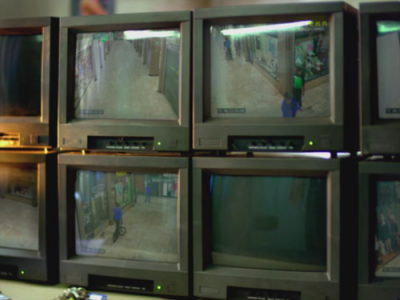
1. Murder on CCTV: The opening sequence in which Jonas is stabbed and killed at a shopping mall is shown through several simultaneous security camera.
The footage of the murder itself was shot with multiple cameras in this somewhat deserted shopping mall. We hung eight different small video cameras, and we let them run in sync. The scene played out in real time. What you see is one take, which we intercut using the eight different cameras for the different screens. I’ve always been interested in the way that images can create an alternate reality, or a fake sense of reality, and I think there is “a code” in CCTV footage that is really interesting. We generally, especially now in the news, relate to CCTV cameras and smartphone images as if they are documenting truth and reality. For me the relation between fiction and this code is like a hyper-observation. A lot of the formal ideas we had thought about in close relation to ideas about the content. For me the film was a lot of about observation, so the idea was to start the film with this hyper-observation and a very objective observation, and then throughout the film to move towards non-observations, since the last image no longer has a subject.
This was always an underlying theme. I wrote it like this in the script, I never intended to be inside this mall. I always intended to have a layer and alternate reality. I was not really interested in the violence. I thought the moment we entered the mall and got close to [the characters] we would have had to make the violence cinematic. It would become part of the film code and then we would have had to stage it more. It’s instead shot through this random eye. It’s just a camera pointing down in a very unpleasant angle. If I had been inside this mall it would have been part of my cinematic aesthetic. I would have had to think how I was going to visualize violence the way I see it, and how I was going to make into film violence and what that means. I got so lost and confused in thinking about portraying violence that for me it felt like the only way was to portray it as something ugly and banal — as ugly as it ends up being in the film.
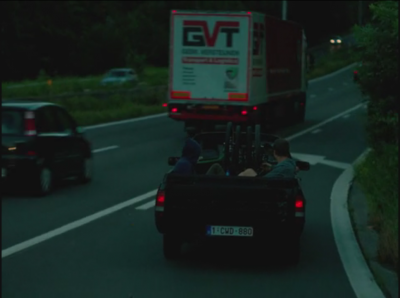
2. Out of the Woods: After being called a coward and told to never come back to hang out with the BMX boys in the forest, Jesse travels back home in the back of a truck.
That’s a shot I like I lot. I find it visually very interesting because of the way we approached the boys. It also has the ability of being an almost-clichéd image of young freedom: kids in the back of a truck going on a highway. But it was never intended to be that and I think it isn’t that. The reason why is not that has to do with how we used sound. The way we approach sound for this specific shot makes the shot. It makes it into something that is completely different from what the image in itself represents. If you were to see the image with the direct sound that we had on set, it would be much more of a boyish-skate-film trope. For me it’s not that anymore because of the way we used silence throughout three quarters of the shot and the way sound details float in and out of the image.
Someone told me that because there is so little dialogue in the film, there is a lot of opportunity for the viewer to see and read things the way he or she wants to read them. This means that the way we approached it allows people to use their imagination. In a way what I thought about this shot, or why it was there, is not that important because I want you to think whatever you are thinking. A lot the reasons for doing the things we did had crossed my mind, but we tried not to nail them down to “it means this” or “it represents this” because I think that as a spectator you would sense this as forced. If for someone this shot represent a goodbye, then that’s just something I like a lot, and if it means something else for another person that’s great as well.
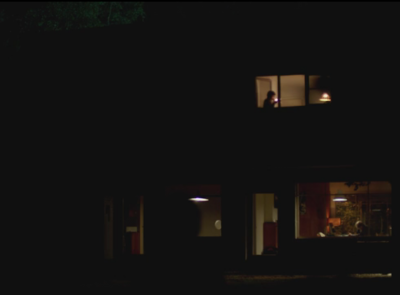
3. Compartmentalized Grief: Jesse stands outside Jonas’ house and sees his family members dealing with pain each on their own while living in the same space.
This shot shows beautiful development as we have these different lights go on in these different rooms, or isolations, for each one of these people. If I think about it almost seems as if I have the bleakest view of what it means to be human, but that’s not the case. Something that I find very important to note is that I think there is mystery to every person. You can only reach the other to a certain point. There is always a limit in how much you can know somebody or get close to somebody. I think it has a lot to do with the fact that we cannot read minds, and even if we could it would make no sense because our minds don’t really make that much sense. For me grieving is sort of a heightened state of being, but it’s not an abnormal state. We grieve all the time. To grieve is a state of being. We say goodbye 24 hours a day, of course, not to big and painful things as a son or a friend, but to small things. This is what it means to be human. We have this amazing ability to overcome the fact that we are conscious of our decay and of the fact that with every step we are approaching death, and that we lose loves in our loves, and that we lose jobs and opportunities. Somehow we manage. It has to do with the intimate strength that everybody has because these are things we all have to deal with on our own. There are ways in which we can share, but I think there are things in which we are truly alone.
I don’t think this shot is just a cinematic translation of an idea, I think it very much works that way in families that are struck by something that horrible. This is a scene you might actually witness. I wrote this scene saying that Jesse is outside and watches them do stuff in different rooms with the lights going on and off. I specifically looked for a house where I would have enough windows and designed in a way were this scene would be possible. However, I didn’t think too much about how it would work practically. We just built the scene with the actors. Step by step we built the sequence. We often work like that, trying not to know too much in advance because then why shoot it if you already know exactly what it’s going to be. That’s no fun on the set.
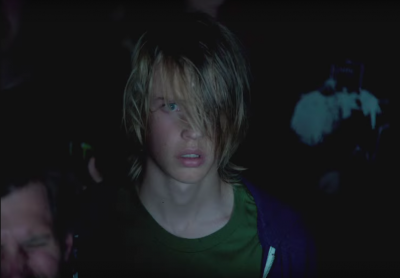
4. Black Metal Loneliness: Jesse attends a Deafheaven concert for the first time and the violent sounds bring comfort to his isolation in a sea of flickering lights.
I write in a very economic way because often there isn’t that much dialogue. The screenplay for Violet was 26 pages, which is not long for a feature film. The script for the film I’m going to do next, which for my way of working is an exuberant script, is about 59 pages. In the script this scene was literally around five sentences. It was like, “Jesse is watching the Deafheaven concert with his friends. One of them doesn’t really care about it, but he is somewhat impressed by this concert. Slowly we move in closer to him.” It was vague enough for us to have some fun and some openness to think about what do these five lines I wrote really mean and how we were going to visualize it. I find it most pleasant if a script is not trying to kill the imagination of those who read it — those who have to work with me, and my own. It felt really natural that this music is a wave that hits you in the face. It sounds sound violent and it makes perfect sense to me that this boy would be overwhelmed by it.
I like this music, black metal, a lot because it’s a force. If you go see a black metal concert there is no connection to the people around you. It’s not like folk music. There is no warmth, community, or feeling of unity. It’s a very solitary experience. That’s why it felt very logical that in an almost silent film this would be a loud rupture with everything else. It’s roughly placed in the middle of the film. It was always the idea that this would be like a loud block in the middle of the film. I don’t know what the standards are in American theaters, but this scene is supposed to be loud in a cinema, not painful but loud. When you see it in a theater, if they do it well, it should be on the edge of being unpleasant. In terms of creating it, I had a great gaffer so it wasn’t that hard to pull off. At first we were playing around with different colors, and that was just a sidetrack; we very quickly found that this was not as nice as he hoped it would be. It made much more sense to have a bluish backlight at the beginning of the scene and this slowly fades out as we come closer to him. It the end we had almost a black-and-white negative-like image. In terms of the timing we just tried different rhythms. It was a trial and error thing.



5. Ambiguous Clouds: His father brings Jesse back home after spending a night in emotional turmoil. As the two of them enter the house, the camera leaves and wanders through the neighborhood until confronted with an impressive fog cloud.
Because the film is so much about solitude, isolation, and the sort of inherent loneliness of being a human being, I knew that I wanted to leave the spectator on his own in the end. I wanted the viewer to be alone, and then I thought, “What does that mean?” Then I wrote this segment were the boy in the end runs away from his house, his father finds him and brings him back. I thought that was nice. He brings him home and we are left looking out the front door and the camera just leaves the house. The camera just starts wandering through this neighborhood. The very final moment, I would classify that as an opportunity for the audience to fill in, even if that sounds cheap or like I have no ideas of my own. We didn’t do anything without reason. If I wanted you to really know what it meant for me I would have made it clear. The fact that it’s ambitious is because I wanted it to be. I want people to question it, and either to hate, or to find it cheap, or to really love it, or to feel lost, or to be confused. That’s what I want. It has a formal meaning for me is the literally dissolution of an image, which I find quite beautiful. But content-wise I think it should be mysterious.
If you see the fog you might think it was easy to do, but it was a nightmare to get it done. We had a guy from Switzerland who works for a Japanese artist who makes fog sculptures. He developed this installation, which is a work of art, to recreate actual clouds. What you see in the film is not a smoke machine. It’s literally like walking through a cloud. For a small film like ours to get this shot done and shoot it on 65mm with a camera that with a full load was 45kg, and to get it steady with a specific pace, was a challenge. We shot two days to get it right. The cloud allowed some maneuvering but the problem was more with the natural light, which started to go relatively fast. It’s supposed to be early morning, but we shot it in the evening. The light was the most challenging because to restart meant to get our whole bazaar back to where we started. We had two takes a night, and that meant four takes in all. It could have easily been a mess if we had wind. Those were two stressful days, but also in a funny way, because it was early in the production, it gave all of us a pleasant feeling. We thought, “Wow. That was something special.” We had no idea because since the 65mm took so long to be scanned. I edited by film using images of this shot taken with an iPhone that we taped on top of the 65mm camera. For a long time this final image of my film was made of images shot on iPhone. The difference couldn’t be bigger when I finally saw what I really had on 65mm.
